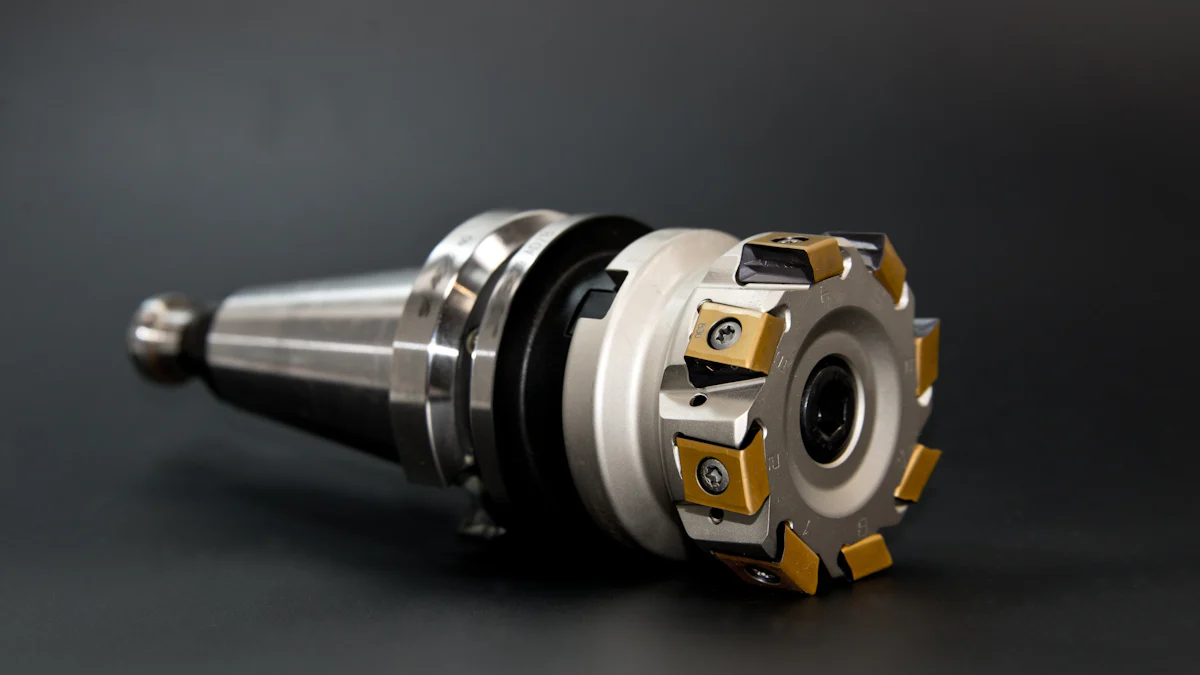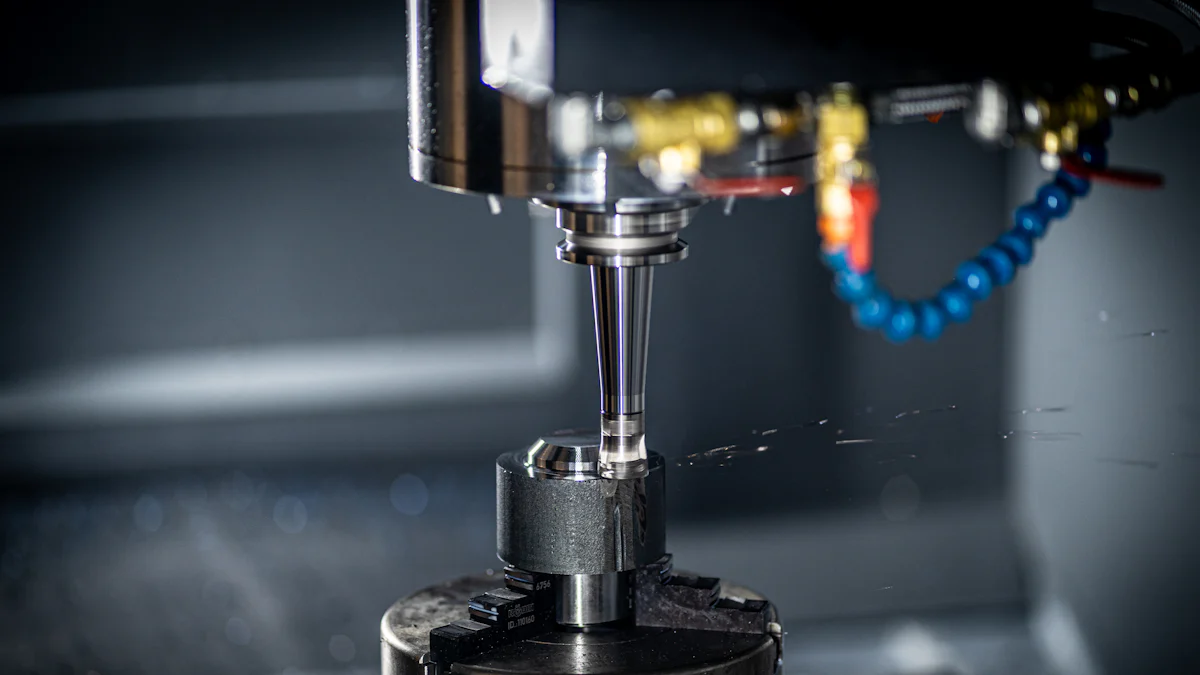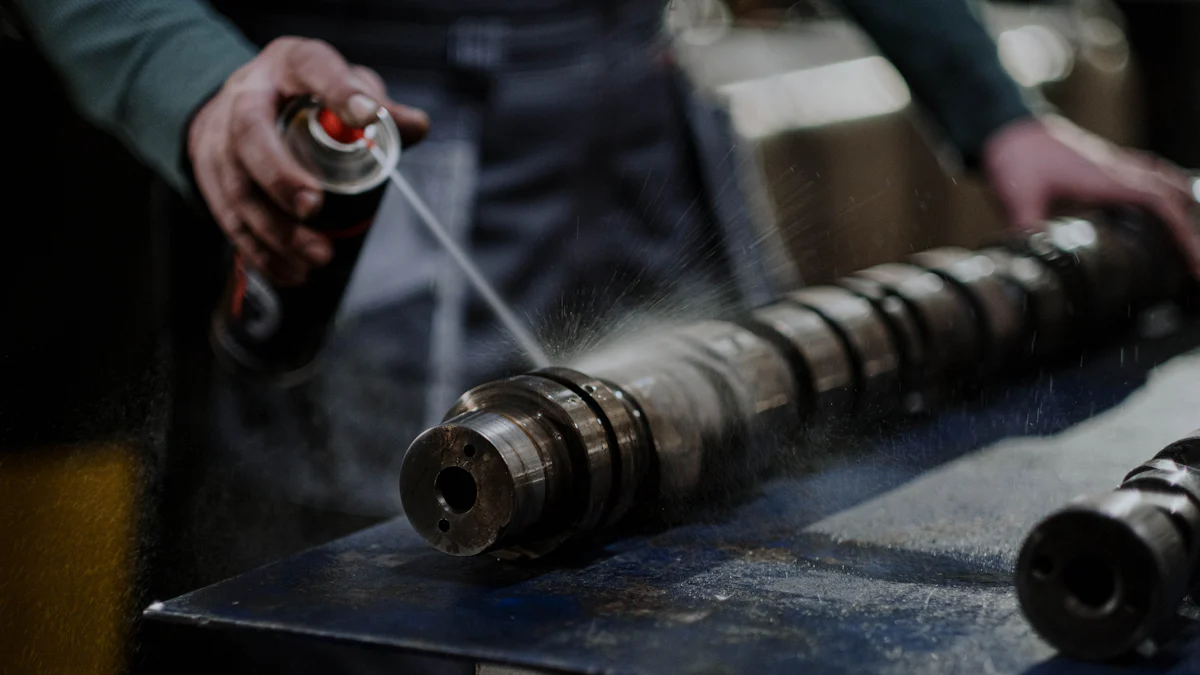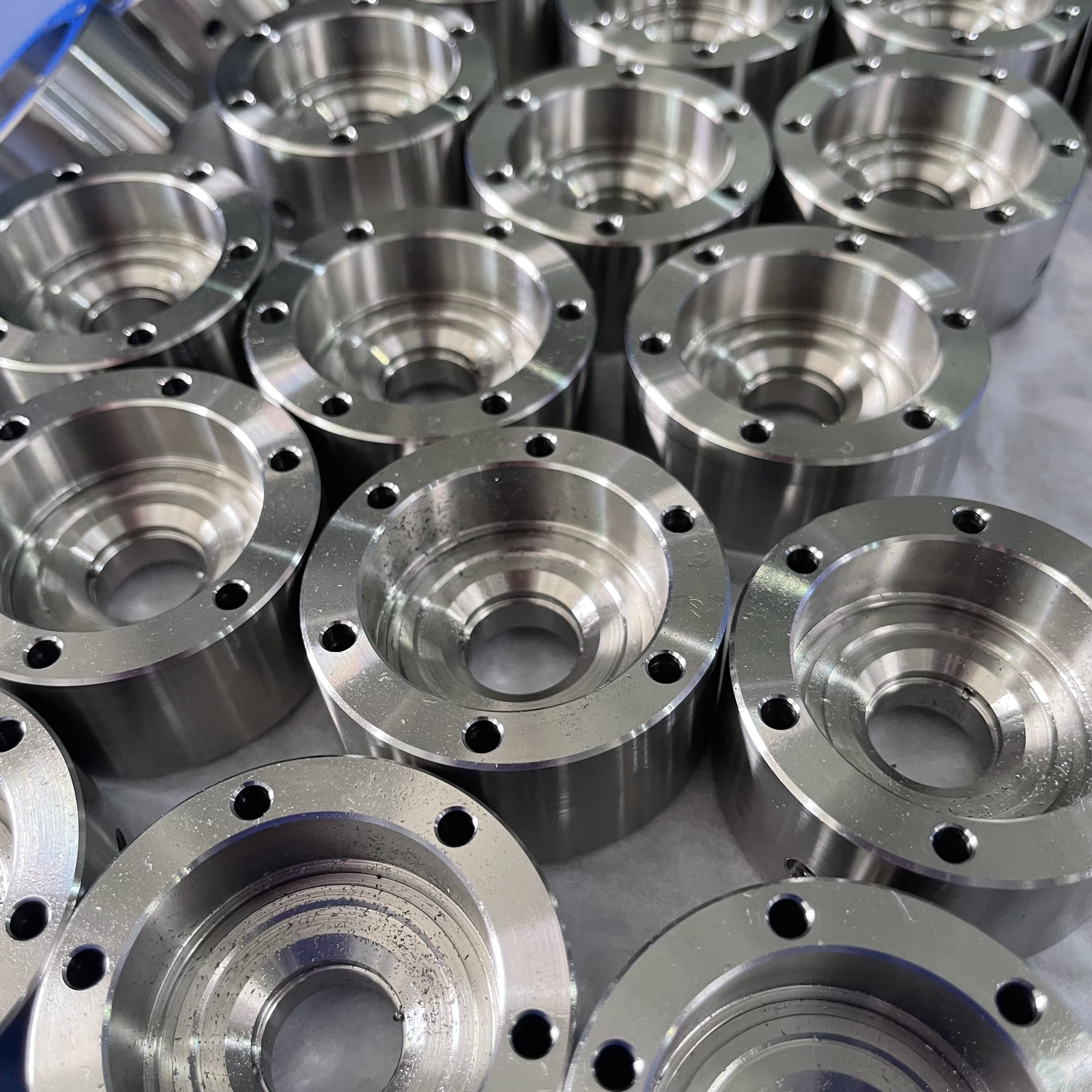How to Master CNC Techniques for Aluminum Machining in 2025

Mastering CNC machining for aluminum has become crucial in 2025. Industries like aerospace, automotive, and electronics rely heavily on CNC to produce precise aluminum components. The demand for aluminum machining continues to grow due to its efficiency and adaptability. Technological advancements, such as AI-driven maintenance, robotics, and real-time monitoring, are revolutionizing CNC processes. These innovations improve machining precision, reduce downtime, and enhance sustainability. By staying updated with these advancements, you can meet the increasing need for high-quality aluminum parts and maintain a competitive edge.
Key Takeaways
Aluminum is easy to shape, so it’s used in industries like airplanes and cars. Knowing the types of aluminum helps improve CNC machining.
New cutting tools and methods, like special coatings and trochoidal milling, make machining faster and more accurate. Picking the right tools makes better products.
Taking care of CNC machines is important for good results. Regular checks and oiling keep machines working well and parts high-quality.
Key Properties of Aluminum for CNC Machining

Machinability of Aluminum Alloys
Aluminum stands out as one of the most machinable materials, making it a top choice for CNC machining. Its lightweight nature, combined with a high strength-to-weight ratio, ensures durability without adding unnecessary bulk. This is particularly advantageous in industries like aerospace and automotive, where performance and weight are critical. Additionally, aluminum grades such as 6061-T6 and 7075-T6 offer excellent machinability, though their characteristics differ.
6061-T6 Aluminum: Known for its high strength and corrosion resistance, this grade is easy to machine and widely used in structural applications.
7075-T6 Aluminum: Offers steel-like strength, making it ideal for high-stress environments. However, its hardness can pose challenges during machining.
1xxx Series: Highly ductile and corrosion-resistant, this series is perfect for electrical applications.
2xxx Series: With excellent machinability and high strength, this series is a staple in aerospace manufacturing.
6xxx Series: A versatile option with good formability and medium strength, suitable for general-purpose machining.
Aluminum alloys also exhibit good machinability due to their ability to be cut efficiently, reducing machining time and improving precision. This makes aluminum for CNC machining a reliable choice across various industries.
Applications of CNC Machined Aluminum Parts
The applications of CNC machined aluminum parts span multiple industries, thanks to aluminum's unique properties. Its corrosion resistance, lightweight nature, and thermal conductivity make it indispensable in modern manufacturing.
Aerospace Industry: Aluminum parts like aircraft fittings and frames are lightweight yet durable, ensuring optimal performance.
Automotive Industry: Engine components and suspension parts benefit from aluminum's strength and reduced weight.
Electronics Industry: Aluminum's thermal conductivity makes it ideal for device housings and heat sinks.
Medical Industry: Biocompatible aluminum parts are used in surgical tools and medical devices.
Marine Industry: Corrosion-resistant aluminum components are essential for ships and other maritime applications.
These applications of CNC machined aluminum parts highlight the material's versatility and importance in precision manufacturing. By understanding the properties of aluminum and selecting the right aluminum grades, you can optimize your CNC machining processes and meet industry demands effectively.
Advanced CNC Tools and Techniques for Aluminum

Cutting Tool Innovations for 2025
Advancements in cutting tools have revolutionized CNC machining processes for aluminum. In 2025, manufacturers have introduced tools specifically designed to enhance performance and efficiency when machining aluminum alloys. These tools address common challenges like chip evacuation, tool wear, and surface finish quality.
Tool Name | Features | Benefits |
|---|---|---|
AE-N series end mill | Designed for aluminum and nonferrous materials, available in short and long cut | Prevents common milling issues, enhances production performance |
TL-N three-fluted long-length end mill | Large core for rigidity, nicked edge for chip breaking, DLC coating | Increased abrasion resistance, allows for higher speeds without losing sharpness |
Modern coatings like titanium carbonitride (TiCN) and diamond-like carbon (DLC) further improve tool performance. These coatings reduce friction, enhance tool life, and improve the surface finish of aluminum parts. DLC coatings, in particular, extend tool life by 3-5 times compared to uncoated tools. Using carbide or diamond-tipped tools also ensures precision and durability during CNC machining of aluminium.
Tip: Selecting the right cutting tool and coating can significantly reduce machining time and improve the quality of aluminum parts.
Optimizing Speeds, Feeds, and Toolpaths
Fine-tuning speeds, feeds, and toolpaths is essential for achieving precision in CNC machining processes. For 6061 aluminum, optimal feed rates range from 0.005 to 0.010 inches per tooth, while spindle speeds should be between 10,000 and 12,000 RPM. Adjusting the depth of cut between 0.100 and 0.150 inches ensures better control and efficiency.
Toolpath strategies like trochoidal milling and helical interpolation further enhance machining performance. Trochoidal milling uses a circular toolpath to reduce cutting forces and improve chip management, making it ideal for slotting tasks. Helical interpolation allows gradual entry into the material, reducing tool wear and improving surface finish.
Identifying the right parameters and strategies ensures tool longevity and consistent quality in aluminum machining.
Workholding and Stability in High-Speed Machining
Workholding innovations in 2025 have improved stability and precision in CNC milling. Vacuum workholding systems now use negative pressure technology to secure delicate aluminum parts without causing damage. Magnetic workholding solutions provide uniform clamping force and quick setup, making them versatile for various workpiece shapes.
Modular and automated workholding systems allow quick changes between workpieces, reducing labor costs and increasing production efficiency. Integration with CNC capabilities ensures accurate setups and minimizes errors during machining.
Note: Proper workholding is critical for maintaining stability and achieving high-quality results in aluminum for CNC machining.
Operator Skills and Maintenance for CNC Mastery
Training and Expertise for 2025
To excel in CNC machining for aluminum in 2025, you need to develop a diverse skill set. Mastering problem-solving techniques is essential for addressing machining errors and optimizing processes. A strong understanding of CAD/CAM software will help you design and manufacture aluminum parts with precision. Mathematical abilities are also critical for performing calculations related to machining parameters.
You should also focus on specific skills like chip management, which involves using tools with fewer flutes, compressed air, and coolants to handle long chips effectively. Proficiency in CNC machining processes such as milling, turning, drilling, and grinding ensures efficiency and precision when working with aluminum grades. Additionally, understanding mechanics, G-code programming, and maintaining attention to detail will help you achieve consistent results.
Training programs like Amatrol’s CNC Machine Operator Program are highly relevant for aluminum machining. This program emphasizes practical skills, including CNC mill, lathe, and grinder setup, tool identification, and quality inspection. It also covers advanced topics like statistical process control, fixture setup, and geometric dimensioning, ensuring you are well-prepared for the demands of modern CNC machining.
CNC Machine Maintenance and Calibration
Regular maintenance is crucial for ensuring CNC machines operate efficiently during aluminum machining. Start by performing routine checks to identify wear and tear on tools. Replace worn-out tools promptly to maintain machining accuracy and avoid quality issues. Proper lubrication of moving parts reduces wear and extends the machine's lifespan.
Calibration checks are equally important. These ensure the accuracy of machine movements, which is critical when working with aluminum grades that demand tight tolerances. Alignment inspections help maintain precision, while consistent tool replacement minimizes the risk of tool failure.
By adopting these maintenance practices, you can enhance the performance of your CNC machines and produce high-quality aluminum parts consistently.
Mastering CNC machining for aluminum in 2025 offers significant economic and operational benefits. You can achieve improved precision, faster production cycles, and cost-effectiveness by understanding aluminum's properties and leveraging advanced CNC tools. Staying updated with CNC advancements, such as adaptive manufacturing and real-time analytics, enhances efficiency and positions you as a leader in the industry. Aluminum's machinability and strength-to-weight ratio make it ideal for diverse applications, from aerospace to electronics. By honing your skills and adopting these techniques, you can excel in aluminum machining and maintain a competitive edge in modern manufacturing.
Tip: Embrace CNC innovations to reduce waste, optimize operations, and meet the growing demand for high-quality aluminum parts.
FAQ
What is the best aluminum grade for CNC machining?
6061 and 7075 aluminum grades are ideal for CNC machining. They offer excellent machinability, strength, and corrosion resistance, making them suitable for various applications.
How can you improve machining precision for aluminum?
Use advanced CNC tools, optimize speeds and feeds, and ensure proper workholding. Regular machine calibration also enhances precision during aluminum machining.
Why is aluminum preferred for CNC machining?
Aluminum is lightweight, corrosion-resistant, and highly machinable. Its strength-to-weight ratio and thermal conductivity make it versatile for industries like aerospace, automotive, and electronics.
See Also
Your 2024 Handbook for CNC Machining Aluminum Alloys
Essential CNC Turning Techniques and Parameters for Success
Benefits of Utilizing Aluminum CNC Machining Services Today
Complete Guide to Mastering CNC Turning Techniques Effectively
Understanding Precision CNC Machining Process Programming for Parts
About US
Follow Us
Your prototype holds unparalleled significance, and we deeply value its uniqueness. Collaborating with you during the preparation phase for running your prototype or parts is a commitment we gladly embrace. Whether it's a single part or a complex assembly, we are dedicated to selecting the optimal tools and pathways to bring your envisioned product to life.
At Precision Fab CNC Machining, we specialize in producing parts for prototypes, short runs, and high-volume production. Our prototyping machine capabilities extend across metal, plastic, and wood machining, with welding fabrication services available to complement and finalize your prototype if required.
Address
Address: Room320 10F, Building A,Nanshan international building, Dayawan District, Huizhou, Guangdong, 516001 China
Contacts
billy@timaycnc.com

